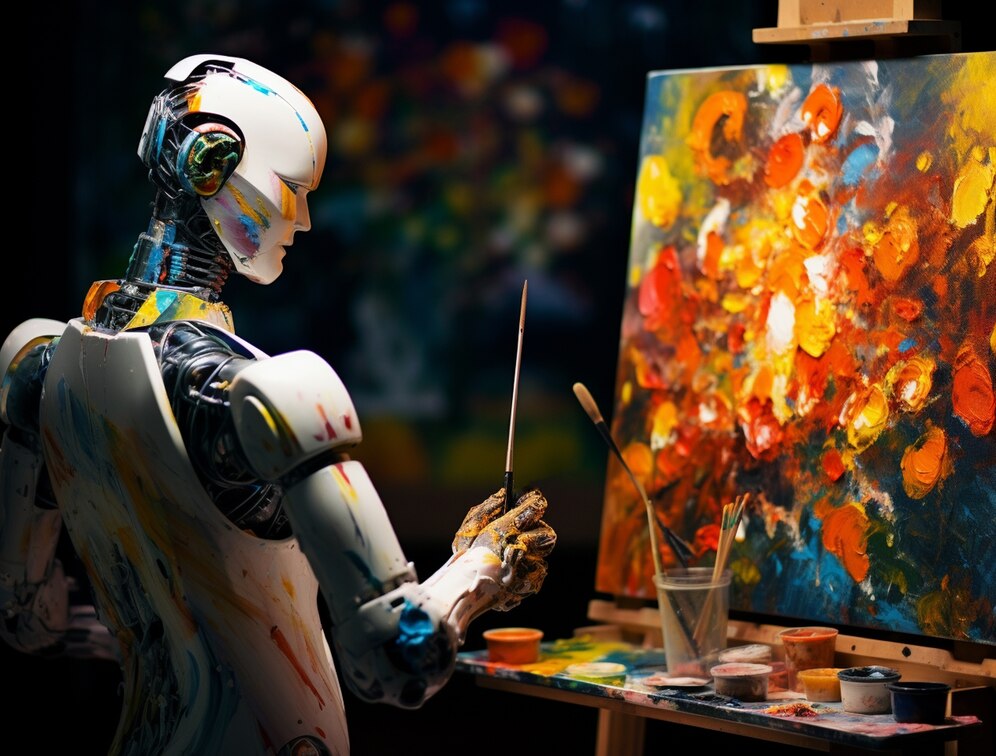Can AI Replace Human Creativity? A Deep Dive into Art and Writing AI
In an age where artificial intelligence (AI) continues to push the boundaries of what was once deemed solely human, one of the most debated topics is whether AI can truly replace human creativity. From generating intricate pieces of digital art to composing entire novels, AI has made significant strides in the realm of creative expression. But does this mean that human creativity is becoming obsolete? Let’s take a deep dive into how AI is impacting art and writing, and whether it can genuinely replace human ingenuity.
AI in Art: Revolution or Replication?
AI-generated art has become increasingly sophisticated, with platforms like DALL·E, MidJourney, and DeepDream creating stunning visuals based on textual prompts. These AI models use deep learning to analyze and generate images that often rival human-created artwork. However, while AI can mimic artistic styles and create novel compositions, it lacks true intent and emotional depth. Art is often a reflection of human experiences, emotions, and cultural narratives—elements that AI, at its core, cannot genuinely comprehend.
While AI can assist artists by automating repetitive tasks or enhancing their creative process, it struggles to create with purpose beyond the data it has been trained on. Human artists bring personal experiences, struggles, and philosophical musings into their work, making it deeply personal and unique.
Writing AI: Automation vs. Authenticity
AI-driven writing tools like ChatGPT, Jasper, and Sudowrite have revolutionized content creation by generating blog posts, poetry, and even fictional narratives. These models analyze vast amounts of text and use probabilistic algorithms to predict coherent and contextually relevant sentences. While this has proven useful for content marketers, businesses, and even novelists, it raises questions about originality and depth.
Human writing is often driven by emotions, cultural influences, and lived experiences, which give stories their soul. AI, while capable of producing grammatically sound and engaging content, lacks intrinsic motivation and the ability to create truly groundbreaking ideas. It functions as an aggregator, piecing together patterns from existing works rather than forming independent creative thoughts.
The Human Touch: What AI Can’t Replace
Despite AI’s growing capabilities, human creativity remains unparalleled due to its unpredictability, emotional depth, and the ability to break conventions. Some key aspects of human creativity that AI struggles to replicate include:
1. Emotional Intelligence – AI lacks the ability to feel emotions, which are crucial for art and literature that evoke strong human responses.
2. Original Thought – AI relies on pre-existing data and patterns, making it difficult to produce genuinely novel ideas.
3. Cultural and Personal Context – Human creativity is often shaped by experiences, heritage, and societal influences that AI cannot truly understand.
4. Purposeful Innovation – Artists and writers often create to challenge norms, make political statements, or explore the unknown—something AI cannot consciously aim to do.
The Future: Collaboration, Not Replacement
Rather than replacing human creativity, AI is more likely to serve as a tool that enhances it. Artists and writers can use AI to generate ideas, refine their work, and push creative boundaries. The future of AI in creative fields lies in collaboration rather than competition.
As AI continues to evolve, its role in art and writing will be that of an assistant rather than an originator. It can help humans overcome creative blocks, automate repetitive tasks, and even inspire new forms of artistic expression. However, the essence of creativity—the ability to think, feel, and innovate—remains uniquely human.
Conclusion
While AI has made remarkable progress in art and writing, it cannot fully replace human creativity. It can generate content, mimic styles, and offer assistance, but it lacks the soul, depth, and intentionality that define true artistic and literary masterpieces. Instead of fearing AI’s advancements, creators can embrace these tools to augment their creative potential, ensuring that technology serves as a partner rather than a replacement in the ever-evolving landscape of human expression.
.png)






Leave a Comment
Your email address will not be published. Required fields are marked *